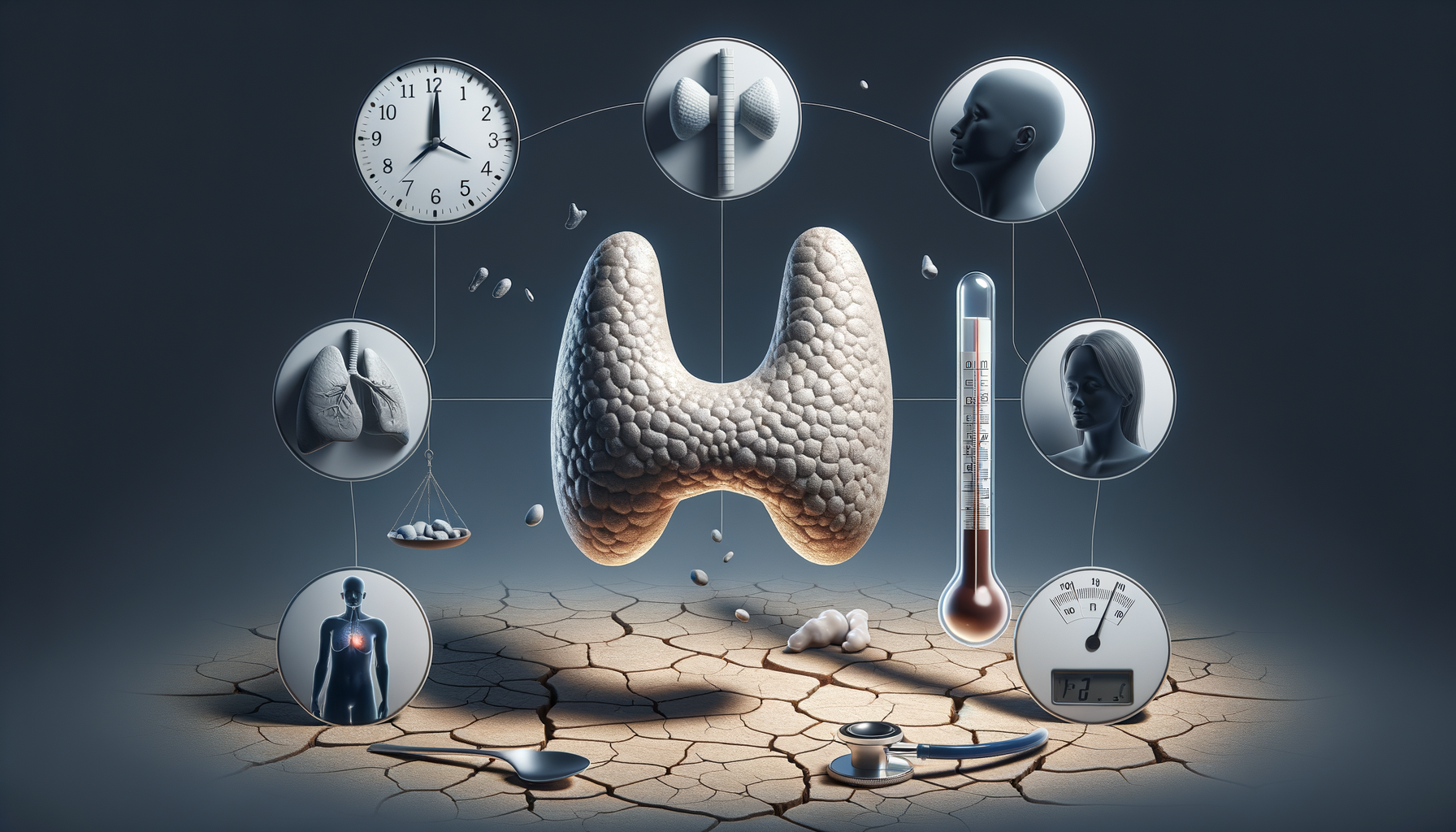
Recognizing the Early Indicators of an Underactive Thyroid
Introduction to Underactive Thyroid Symptoms
The thyroid gland, a small butterfly-shaped organ located at the base of the neck, plays a crucial role in regulating metabolism and energy levels. An underactive thyroid, also known as hypothyroidism, occurs when the gland fails to produce sufficient thyroid hormones. This condition can lead to a myriad of symptoms that often develop slowly and may be mistaken for other health issues. Recognizing these early indicators is vital for seeking timely medical intervention and managing the condition effectively. This article explores the common symptoms of an underactive thyroid, helping you understand their impact on overall well-being.
Common Symptoms of an Underactive Thyroid
Hypothyroidism can manifest in various ways, affecting different bodily functions. Some of the most common symptoms include:
- Fatigue: Persistent tiredness and lack of energy are hallmark signs, often leading individuals to feel exhausted despite adequate rest.
- Weight Gain: Unexplained weight gain or difficulty losing weight can occur due to a slower metabolism.
- Cold Intolerance: Increased sensitivity to cold temperatures is another frequent complaint among those with an underactive thyroid.
- Dry Skin and Hair: The skin may become dry and rough, while hair can become brittle and fall out easily.
- Depression: Mood swings and feelings of depression may arise as thyroid hormone levels drop.
These symptoms can vary in intensity and may overlap with other conditions, making it essential to seek medical advice for an accurate diagnosis.
Understanding the Impact on Daily Life
Living with an underactive thyroid can significantly affect one’s quality of life. The persistent fatigue can hinder daily activities, making it challenging to maintain productivity at work or home. Weight gain, despite efforts to eat healthily and exercise, can lead to frustration and a negative body image. Additionally, the emotional toll of dealing with mood swings and depression can strain relationships and social interactions.
However, recognizing these symptoms and understanding their connection to thyroid health can empower individuals to seek appropriate treatment. With medical guidance, many people can manage their symptoms effectively, improving their daily life and overall well-being.
Diagnosis and Medical Evaluation
When symptoms of an underactive thyroid are suspected, a healthcare provider will typically conduct a thorough evaluation. This process often involves a detailed medical history, physical examination, and specific blood tests to measure levels of thyroid hormones, such as TSH (thyroid-stimulating hormone) and T4 (thyroxine). Elevated TSH and low T4 levels are indicative of hypothyroidism.
Early detection is crucial, as untreated hypothyroidism can lead to more severe health complications, including heart disease and mental health issues. Regular monitoring and follow-up with a healthcare provider ensure that any changes in symptoms or hormone levels are addressed promptly, allowing for adjustments in treatment as needed.
Conclusion: Taking Control of Thyroid Health
Recognizing the early indicators of an underactive thyroid is a vital step towards managing the condition effectively. By understanding the common symptoms and their impact on daily life, individuals can engage in informed discussions with healthcare providers. Early diagnosis and appropriate treatment can significantly improve quality of life, helping manage symptoms and prevent complications.
For those experiencing signs of hypothyroidism, seeking medical advice is essential. With the right support and treatment plan, living with an underactive thyroid can become a manageable aspect of life, enabling individuals to maintain their health and well-being.


